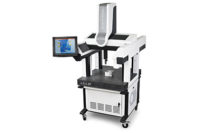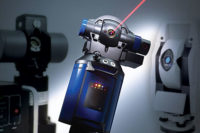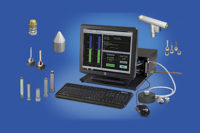Presence of price-sensitive end-users increase demand for global gages market
The need for high-precision equipment limits the growth of gages market
Conclusion
Product Overview
| Product | Description | Pricing Range |
| Height Gages |
A typical height gage has a vertical column attached to a flexible unit. The arm that protrudes measures the work piece. Different types of height gages include vernier height gage, dial height gage, digital dial height gage, and electronic digital height gage. Typical accessories for a height gage include riser blocks, scribers, probes, software, and the granite surface probes. A height gage can be used in several applications ranging from a mere go/ no-go type application to mapping a complex part.
Drivers: With the features such as direct Internet connection facilities and better resolution continue to make height gauges necessary to have in leading dimensional metrology equipment portfolio.
Restraints: The height gage is incapable of measuring spherical or cylindrical objects making it less preferred compared to CMMs in such application areas.
|
$50-$500 |
| Plug and Bore Gages |
Plug gages are preferred when volumes are high and tolerances are tighter. Two kinds of gages include adjustable capacity gages and fixed size gages. Plug gages are known for its repeatability, less subject to wear and are best when used with electronic data collection system. Adjustable bore gages are preferred by end-users because of its cost.
Drivers: The go/no-go gage is essential because of the simplicity it brings in the process of inspecting if a product meets specifications.
Restraints: The check fixture grabs more application areas from the plug and bore gages because of its ability to measure far more complex components. The plug and bore gages do not provide an analysis of the product as to where the fault lies.
|
$400-$1,500 |
| Ring Gages |
Ring gages are cylindrical measuring devices used primarily for measuring size and roundness of the workpiece and as a reference point completing other measuring devices.
Drivers: Ring Gages are used for numerous applications areas such as comparative gaging and as master gages to often calibrate other gages or micrometers on the shop floor.
Restraints: Although ring gages remain important for various application areas, the absence of statistical process control data increases the need to use other metrology systems for part inspection in bigger machine shops.
|
Starting from $50 they are likely to run into the thousands of dollars depending on the size, features, and application. |
| Depth Gages |
Depth gages are preferably used to measure the depth of holes, cavities, and/or other parts. Depth gages configurations include dial depth gages, digital depth gages, depth micrometer, thread depth gages, flush pin gages, and vernier depth gages.
Drivers: The ability to customize equipment to measure any range with reliable accuracy levels drives the demand for measurement of hard-to-reach holes and steps as these application areas require a contact type of precision equipment.
Restraints: Limitation in application areas restricts growth of this product in the gages market.
|
$50-$500 |




